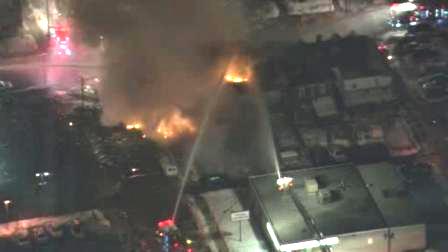What if they write next week they don’t like the color of your fire truck?
There are a lot of people in the fire service who think drivers of fire apparatus should slow down. Safe driving policies are standard for fire departments. It is also becoming SOP for the fire service of today to be responsive to citizen complaints. Some firefighters in New Brunswick thing a chief has gone too far in meeting those goals.
This comes after a fire chief apparently changed the department’s policy based on one written complaint from one citizen. Here are excerpts from a story by Andrew McGilligan of the Telegraph-Journal:
One formal written complaint has prompted a change in the standard operating procedure of the Kennebecasis Valley Fire Department.
The fire department recently received an official complaint about one of its vehicles speeding on the way to an emergency situation, said the fire department’s administrator, Mike Brennan.
“In reaction to that complaint, we revised our standard operating procedure to prohibit speeding until we could do a more thorough investigation of what our operating procedure should be, and if it should be changed at all,” Brennan said.
The original standard operating procedure states the driver of a fire truck shall always maintain a speed consistent with the safe operation of the vehicle under prevailing conditions. The words ‘within the posted speed limit’ have been added.
Jim Lee, the assistant to the general president for Canadian operations of the International Association of Fire Fighters (IAFF), said KV Fire Chief Larry Greer has not handled the situation properly.
“There should have been some consultation with the union prior to the fire chief putting out a standard operating procedure that varies so differently from what they’re used to,” Lee said. “Do they make changes every time they get one formal complaint?”
Under the provincial Motor Vehicle Act, the driver of an authorized emergency vehicle may “exceed the speed limits so long as he does not endanger life or property.”
“The bottom line is we’ve dealt with this before and the response times increase dramatically,” Lee said. “Response times when you’re dealing with a fire are crucial.
Brennan said the ban on speeding for fire trucks is a temporary measure while an investigation is done. He hopes a decision on whether to scrap the change or leave it in place will be determined within two weeks.
“One thing we have to address is “¦ will it affect response times and how dramatically?” Brennan said. “We’re going to get some legal advice and meet with the IAFF to discuss it next week.”
Should the change remain in place, the manager of media relations for the Insurance Bureau of Canada James Geuzebroek said it could affect insurance premiums down the road.
“If, for whatever reason, insurers observe an increase in the number of fires or in the severity of fires in a particular area, premiums would begin to creep up reflecting the increased risk,” Geuzebroek said. “If this change happened to cause that, and there’s no way of knowing now if it will, several years from now you could see it affecting premiums.





